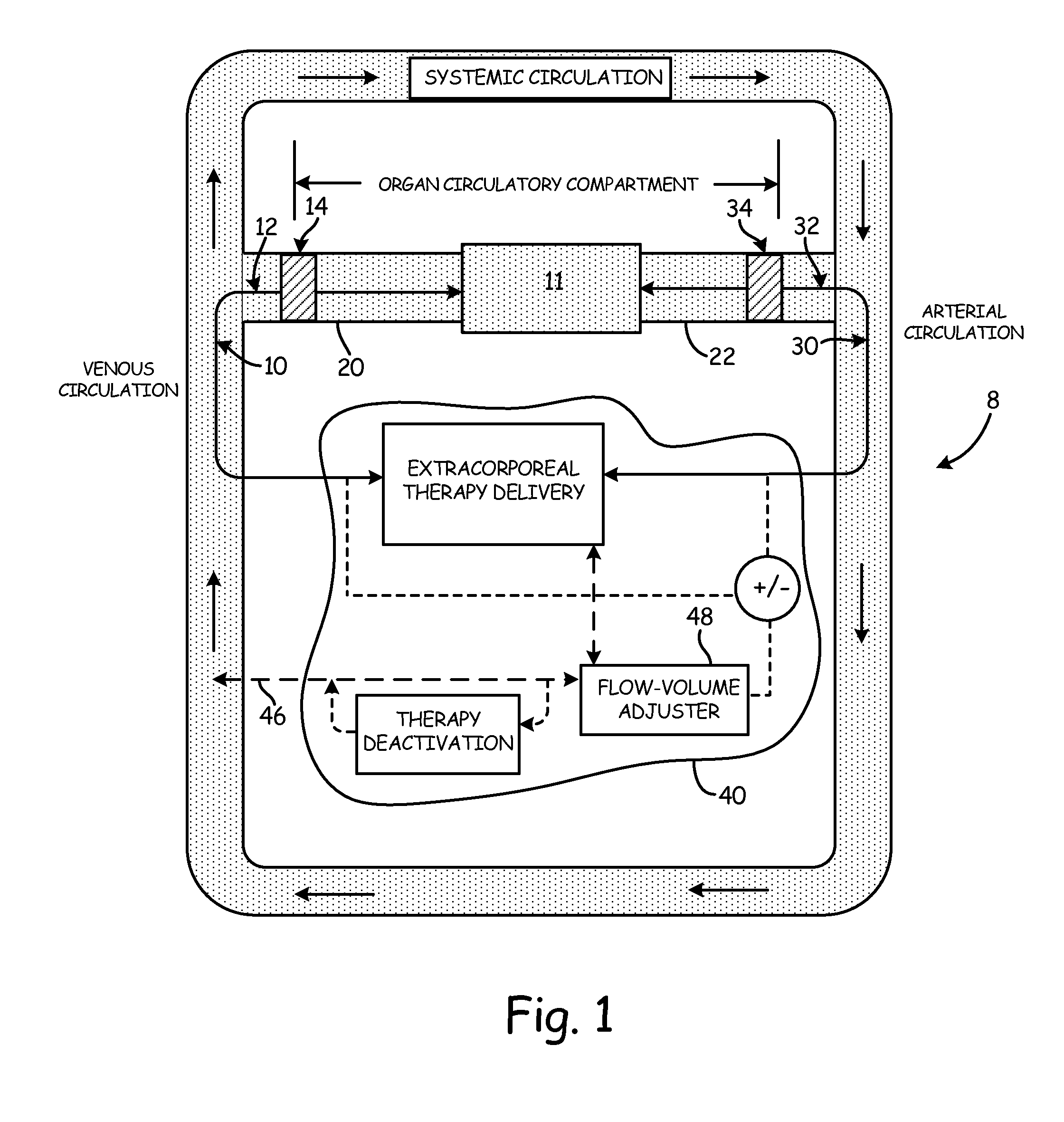Localized therapy delivery and local organ protection
a localized therapy and organ protection technology, applied in the field of general therapy delivery, can solve the problems of dilution of administered treatment, ineffective systemic administration of such local treatment, and inability to achieve the maximum benefit of treatment, so as to facilitate localized treatment of a specific organ, prevent or minimize systemic side effects, and prevent or minimize organ damage
- Summary
- Abstract
- Description
- Claims
- Application Information
AI Technical Summary
Benefits of technology
Problems solved by technology
Method used
Image
Examples
Embodiment Construction
[0050]The objects and advantages enumerated above, together with other objects, features, and advances represented by the present invention will now be presented in terms of detailed embodiments described with reference to the attached drawing figures which are intended to be representative of various possible configurations of the invention. Other embodiments and aspects of the invention are recognized as being within the grasp of those having ordinary skill in the art.
[0051]An aspect of the present invention is the establishment of a tissue structure circulatory compartment that is at least partially isolated from the systemic circulation of the body. For the purposes of the present invention, the term “tissue structure” may mean a cell structure of a mammalian body, such as an organ or limb having blood circulation therethrough. The terms “organ” and “tissue structure” may therefore be used interchangeably herein to refer to a cell structure of or in a mammalian body through whic...
PUM
 Login to View More
Login to View More Abstract
Description
Claims
Application Information
 Login to View More
Login to View More - R&D
- Intellectual Property
- Life Sciences
- Materials
- Tech Scout
- Unparalleled Data Quality
- Higher Quality Content
- 60% Fewer Hallucinations
Browse by: Latest US Patents, China's latest patents, Technical Efficacy Thesaurus, Application Domain, Technology Topic, Popular Technical Reports.
© 2025 PatSnap. All rights reserved.Legal|Privacy policy|Modern Slavery Act Transparency Statement|Sitemap|About US| Contact US: help@patsnap.com



